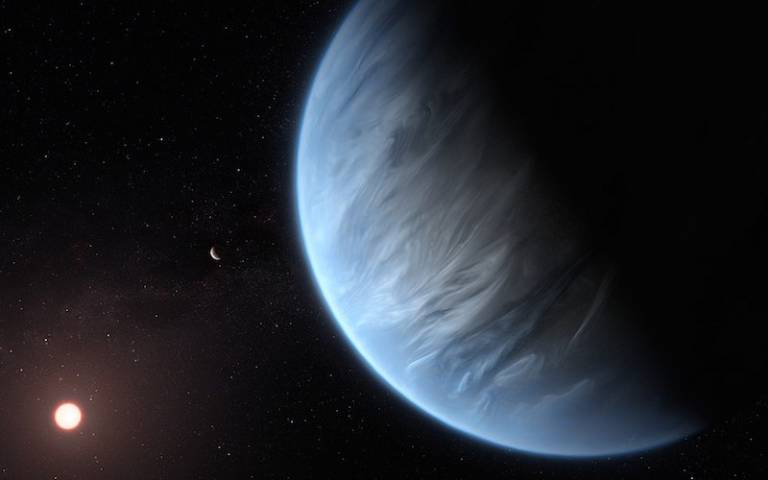First water detected on potentially ‘habitable’ planet
In a world first, UCL researchers detected water vapour in the atmosphere of a super-Earth with habitable temperatures.

The study contributes to our understanding of habitable worlds beyond our Solar System and marks a new era in exoplanet research, which is crucial for placing the Earth, our only home, into the greater picture of the Cosmos. K2-18b, which is eight times the mass of Earth, is now the only planet orbiting a star outside the Solar System, or ‘exoplanet’, known to have both water and temperatures that could support life.
The discovery by Dr Angelos Tsiaras, Dr Ingo Waldmann, Professor Giovanna Tinetti, Professor Jonathan Tennyson and Dr Sergey Yurchenko (UCL Physics & Astronomy and UCL Centre for Space Exochemistry Data (CSED)) was the first successful atmospheric detection for an exoplanet orbiting in its star’s ‘habitable zone’, at a distance where water can exist in liquid form.
First author, Dr Angelos Tsiaras, said:
“Finding water in a potentially habitable world other than Earth is incredibly exciting. K2-18b is not ‘Earth 2.0’ as it is significantly heavier and has a different atmospheric composition. However, it brings us closer to answering the fundamental question: Is the Earth unique?”
The team used archive data from 2016 and 2017 captured by the ESA/NASA Hubble Space Telescope and developed open-source algorithms to analyse the starlight filtered through K2-18b’s atmosphere. The results revealed the molecular signature of water vapour, also indicating the presence of hydrogen and helium in the planet’s atmosphere.
The authors believe that other molecules including nitrogen and methane may be present but, with current observations, they remain undetectable. Further studies using new space telescopes including the James Webb Telescope and the UCL-led ESA mission, ARIEL, are required to estimate cloud coverage and the percentage of atmospheric water present.
Links
- First water detected on potentially ‘habitable’ planet (UCL News)
- UCL Centre for Space Exochemistry Data
- Dr Angelos Tsiaras
- Dr Ingo Waldmann
- Professor Giovanna Tinetti
Image
- Credit: ESA/Hubble, M. Kornmesser, Source: Wikimedia Commons
 Close
Close

